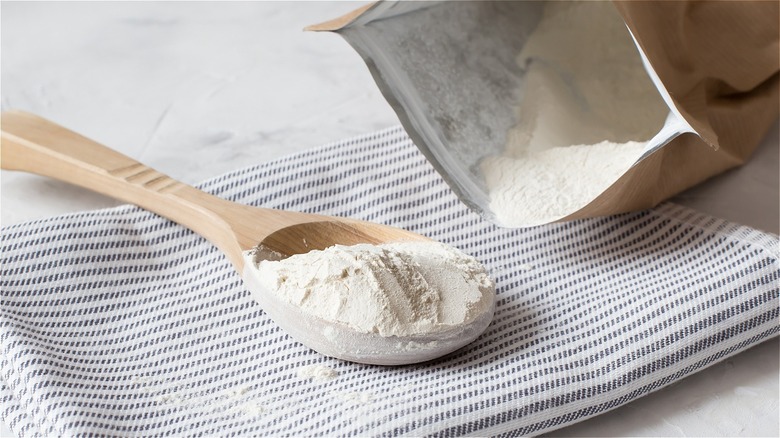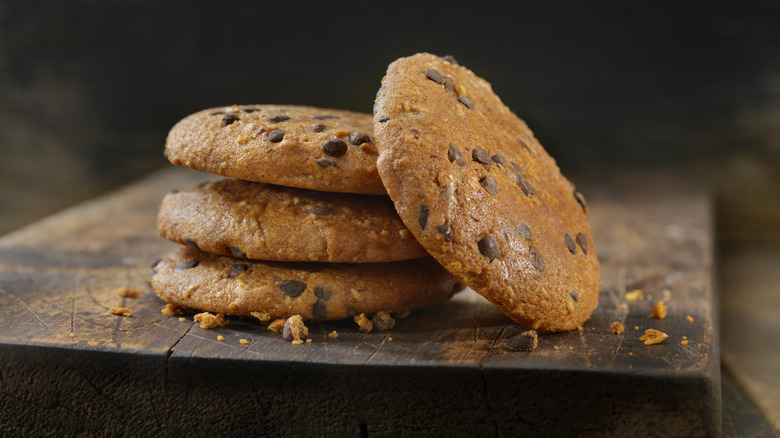Xanthan Gum Is The Key Ingredient For Making Gluten-Free Cookies
If you've ever tried baking gluten-free cookies, you know how easy it is to mess them up. Gluten is a protein that holds flour together, so when you take it out of the equation, your cookies can disintegrate like the Avengers post-Thanos snap or turn into stodgy lumps of carbs that lie flat on the baking tray. Luckily, that's nothing a little bit of xanthan gum can't fix.
Xanthan gum is commonly used as a gluten substitute in baking. It is also used in products such as toothpaste, gels, shampoos, candy, frozen foods, and sauces. The additive is formed when Xanthomonas campestris bacteria ferment carbohydrates like glucose solution. Xanthan gum replicates the stickiness and elasticity provided by gluten, so adding it to a gluten-free flour can help maintain the structural integrity of baked goods, including cookies.
Gluten-free cookies can be dry, but since Xanthan gum has the ability to absorb and retain moisture, it can help keep them nice and soft for a long time. Moreover, it doesn't impart unwanted flavor or smell to food, so you can use it without reservations. You can also make chewy cookies with it, like our triple chocolate gluten-free cookies.
A little goes a long way
For every cup of gluten-free flour, add approximately ¼ teaspoon of xanthan gum. Using too much of it can make your cookie dough unpleasantly gummy and sticky, making it difficult to work with it. Xanthan gum can also have some side effects when consumed in excess. WebMD says it can cause bloating and gas. It can also have a laxative effect.
If you do end up adding more than necessary, you can dilute it with other key ingredients like flour to fix it. You can also use xanthan gum with another binder like guar gum for a better consistency. Since xanthan gum can quickly absorb liquid or moisture, it has a tendency to get clumpy. To avoid that, add some sugar to it and mix it well after adding water. Another trick is to mix it with oil before adding water to it.
Xanthan gum might not be safe for people who are severely allergic to soy, corn, or wheat. Since it is a product of glucose fermentation, it's always better to verify where it came from. Xanthan gum is also not safe for infants, per Healthline. Diabetics should also be cautious since it can lower their blood sugar levels. Moderation is key. Flaxseed and chia seeds can be used as alternatives to xanthan gum.

